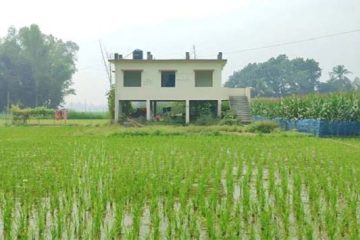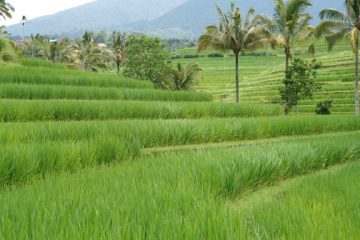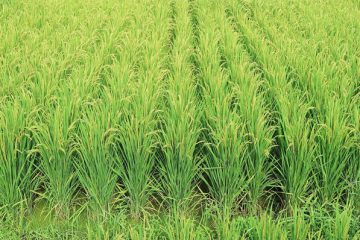From The New Nation
 Farmers in eight monga prone districts will be able to produce an additional 10 lakh tons of Aman paddy within a couple years by cultivating a new variety of paddy (BINA-7) developed by the Bangladesh Institute of Nuclear Agriculture (BINA).
Farmers in eight monga prone districts will be able to produce an additional 10 lakh tons of Aman paddy within a couple years by cultivating a new variety of paddy (BINA-7) developed by the Bangladesh Institute of Nuclear Agriculture (BINA).
This was disclosed at a field level demonstration of BINA-7 at Mithapukur upazila in Rangpur yesterday.
Md Antaz Miah, a farmer of Dimla village in Rangpur Sadar told The New Nation that he cultivated BINA-7 in his several acres of land.
“I have got tremendous result from my paddy field,” he said adding that he has produced nearly 7 tons of paddy per hectare on his land.” It was only 4 tons per hectore with in traditional BRRI-33 variety from the same land last year.
Mokhlesur Rahman, another farmer in Kawnia village in Mithapukur upazila said he has been benefited by cultivating BINA-7. “Production cost of BINA-7 is comparatively lower from traditional Aman varieties as it can be produced only in 110 days.
“We need proper help from Department of Agriculture Extension officials to disseminate the variety at monga prone areas,” he said.
Scientists of Bangladesh Institute of Nuclear Agriculture (BINA), who developed the new Aman variety BINA-7, said that farmers can get an additional two tons of yield per hectare of Aman over the traditional variety.
A total of 10,000 hectares of land came under BINA-7 cultivation in eight monga prone districts this year, an official of Department of Agriculture Extension (DAE) said.
“We expect to get 50,000 tons of rice from 10,000 hectares of paddy field,” he said adding that it was only 35,000 tons from the same paddy field of BRRI-33 variety on an average.”
Farmers in the monga areas will feel encouraged to cultivate BINA-7 as they are able to get yields from the variety within 110 days whereas other varieties needed 30 more days, BINA scientist Dr Md Ali Azam, who developed the variety, told The New Nation yesterday.
“I have developed BINA-7 variety in cooperation with my associate after long nine years research in BINA,” Dr. Azam said, adding that the farmers feel encouraged to produce BINA-7 as the BINA-7 has more disease resistance capacity from other Aman varieties.
He said that farmers can overcome monga by cultivating the variety as the BINA-7 can be cultivated not only in Aman season but also all over the whole year. He said that the Aman production can be raised to two crore tons by disseminating the variety. It will help ensure food security of the country, he hoped.
A total of 7, 86,885 lands came under Aman cultivation this year in greater Rangpur region, sources said.






